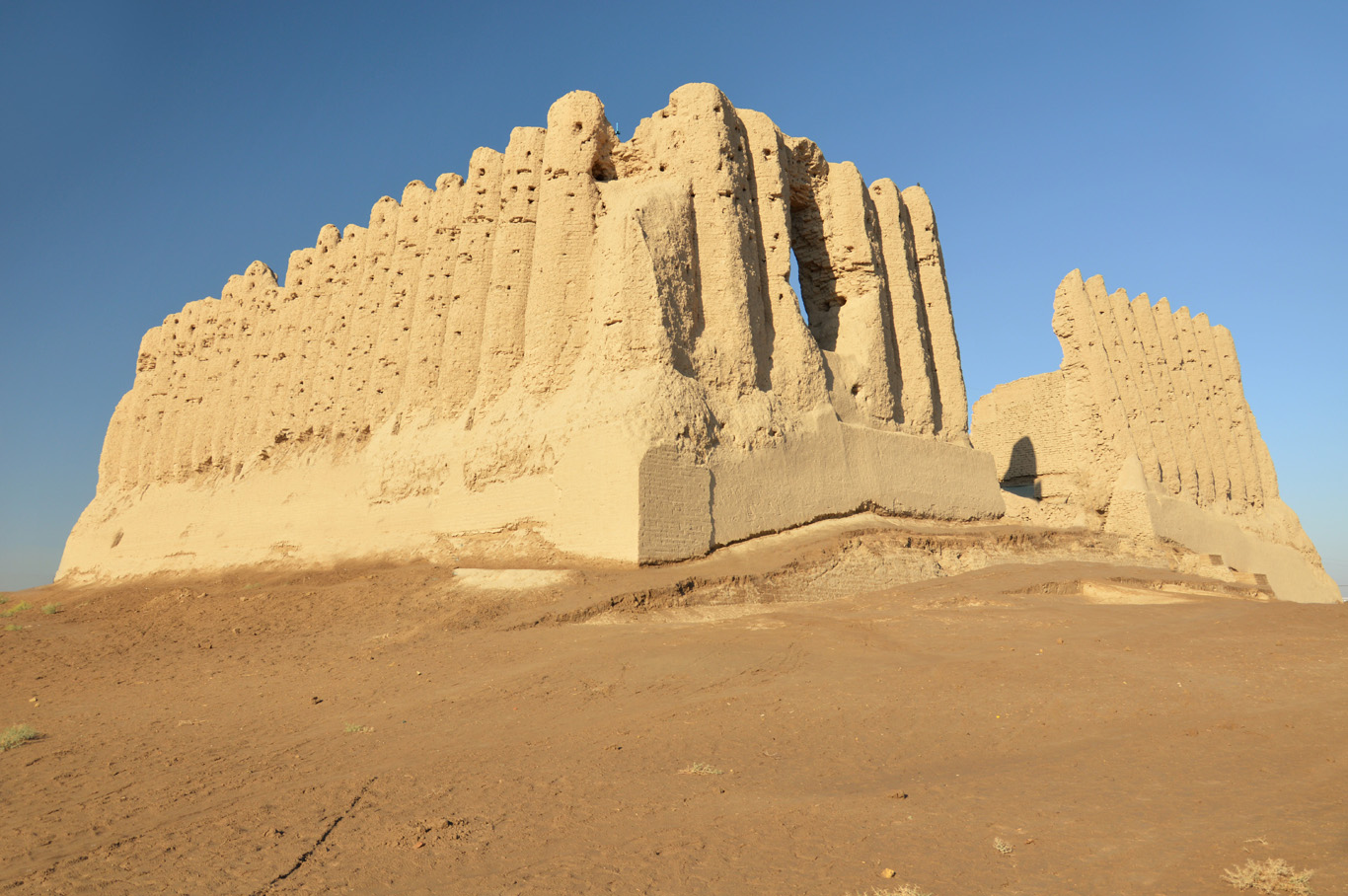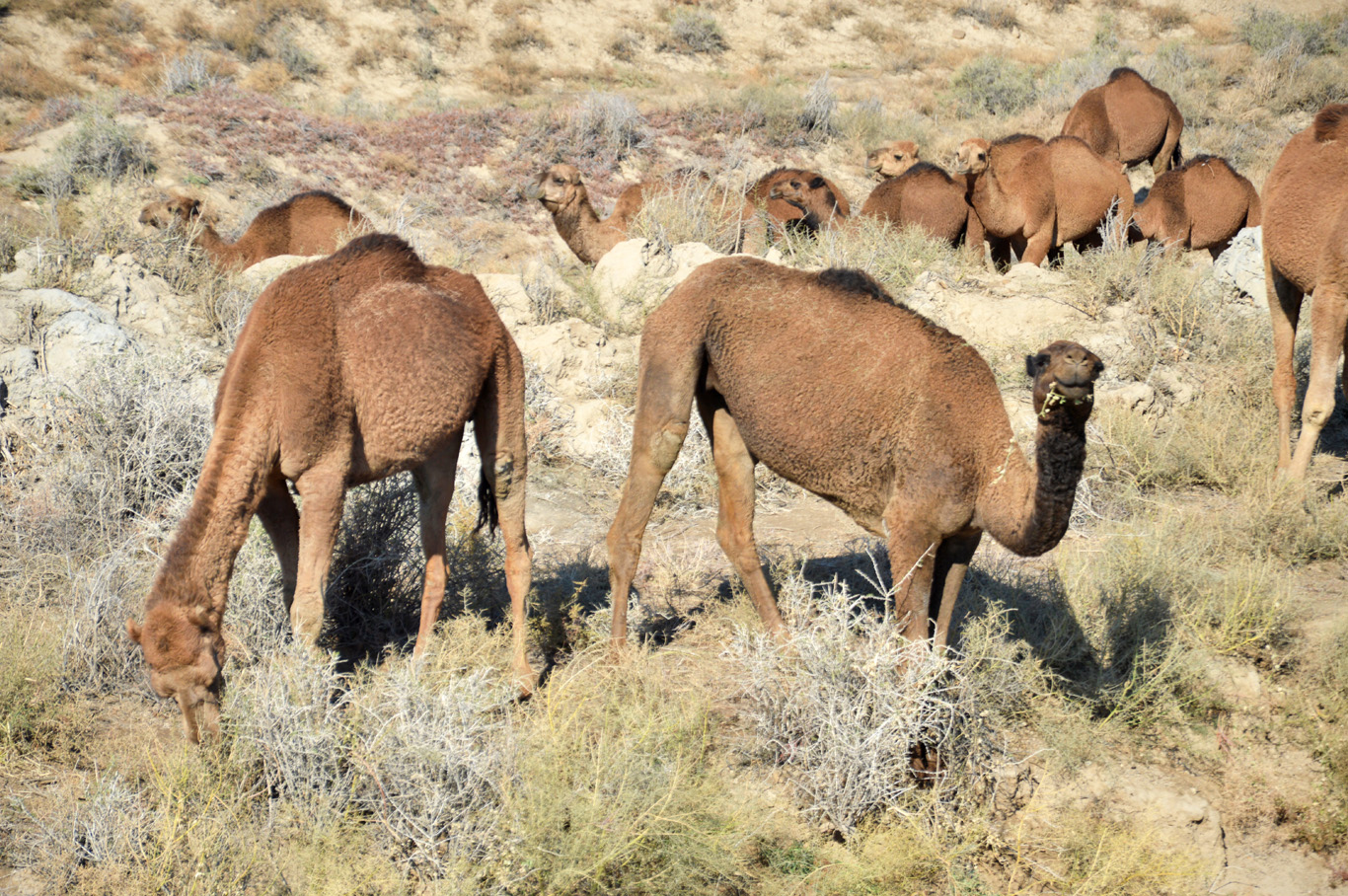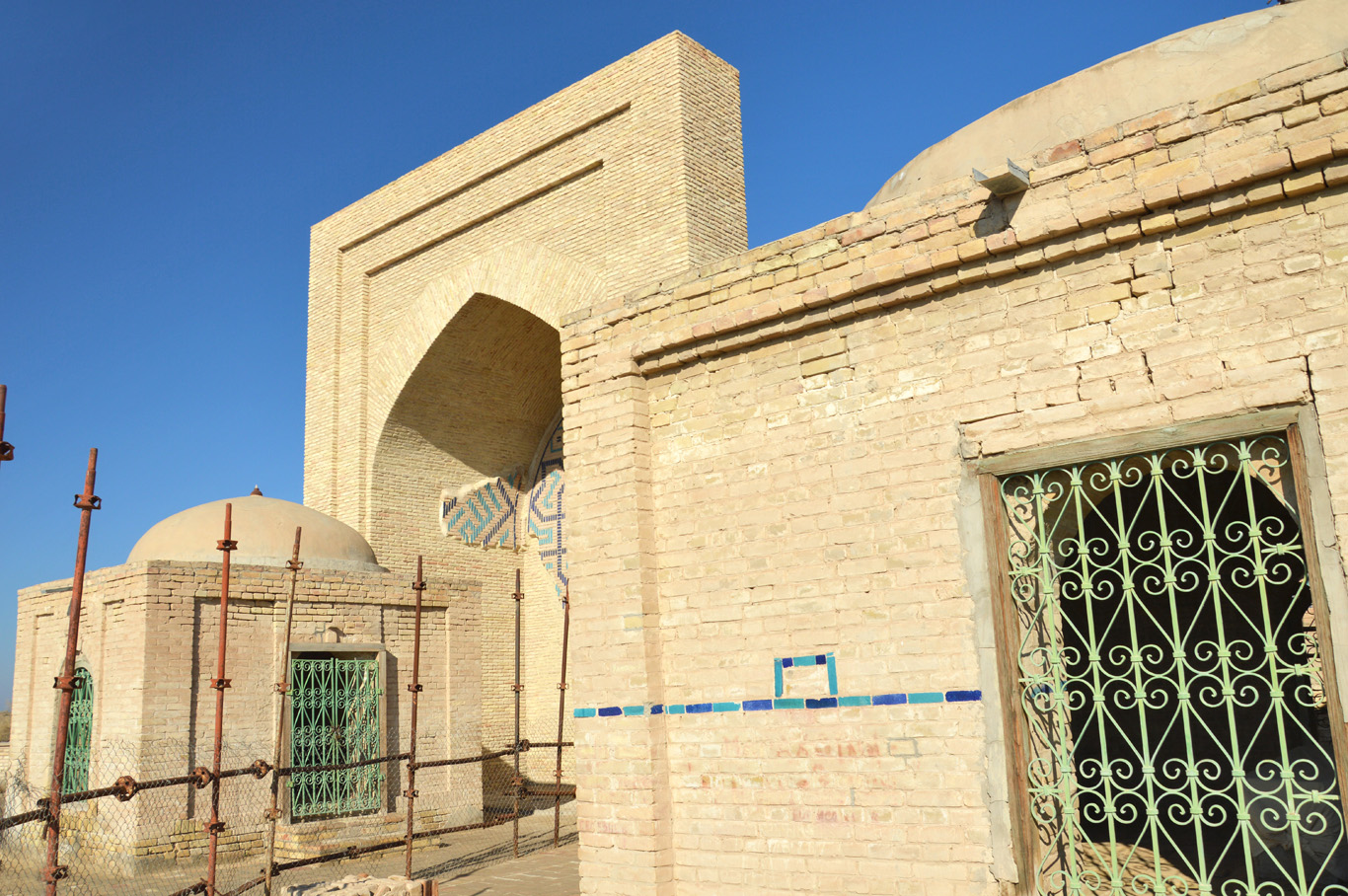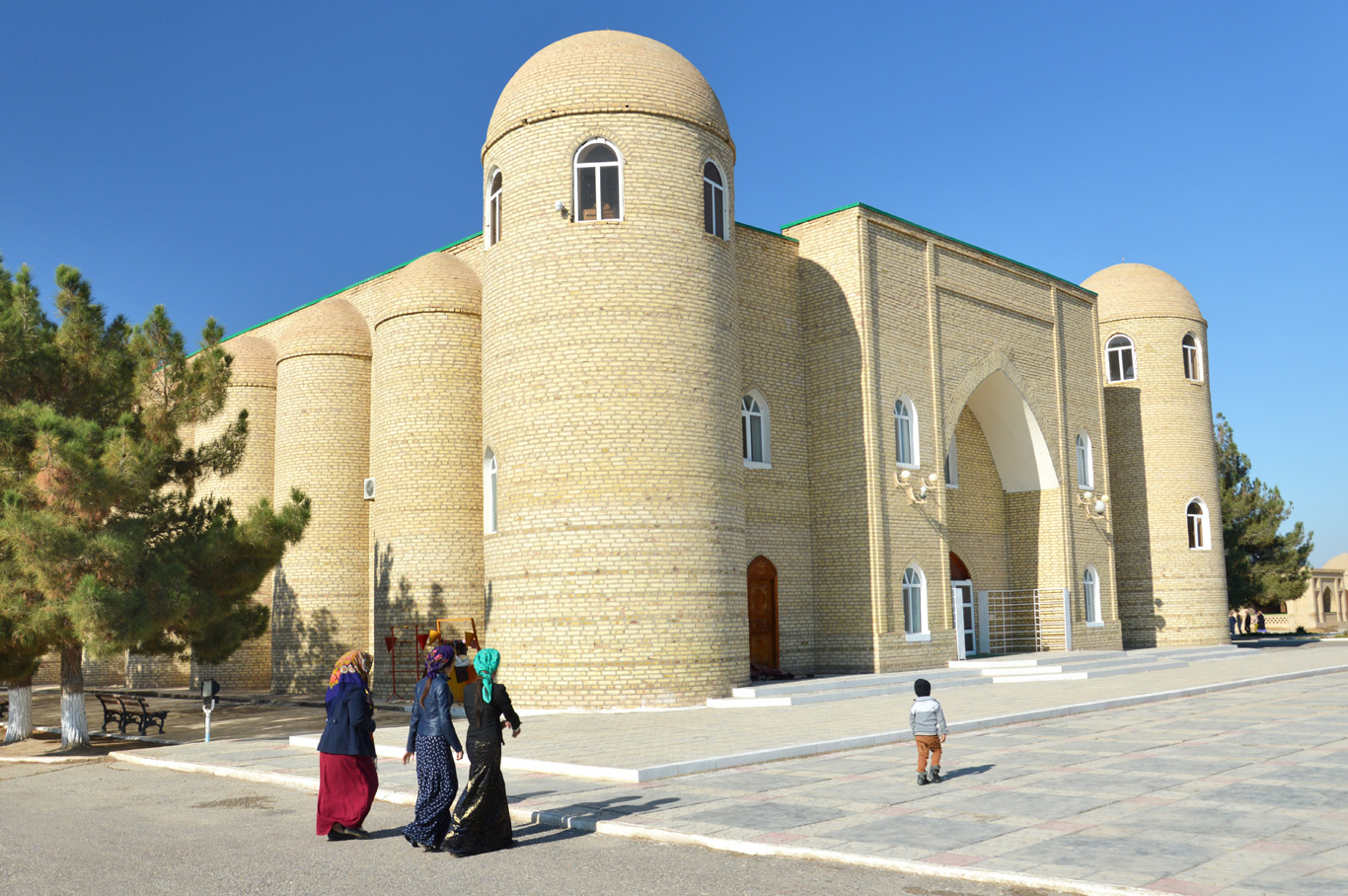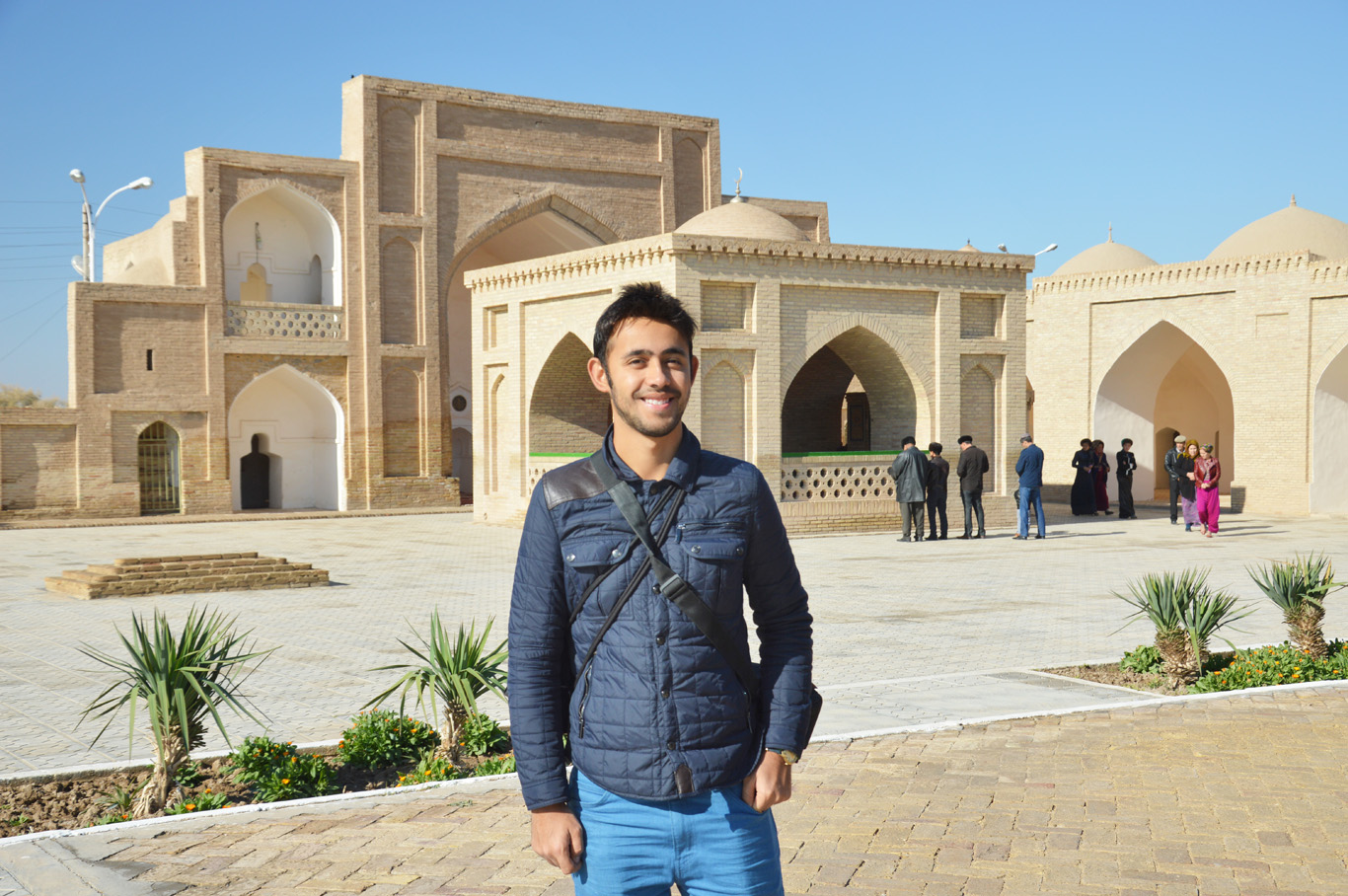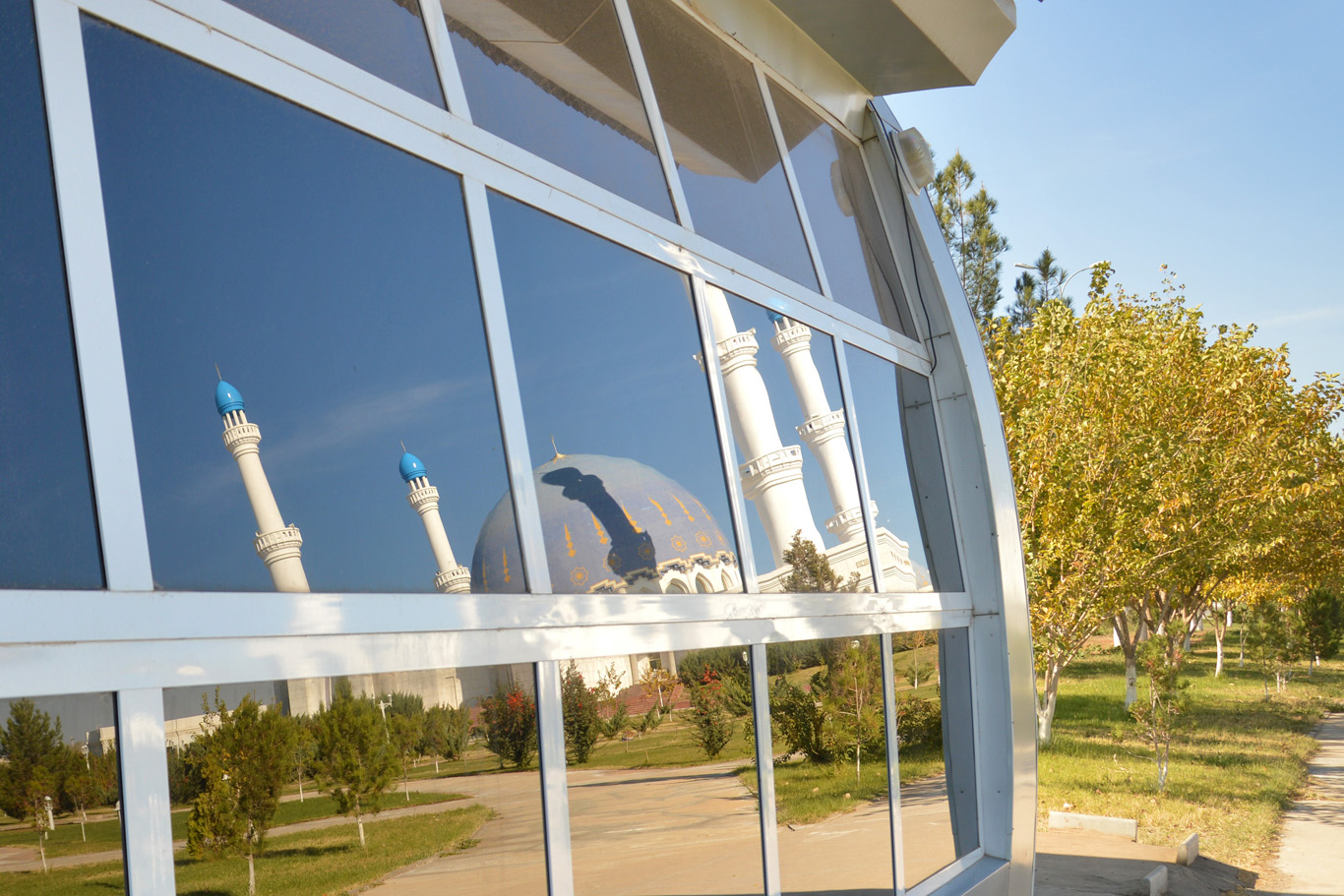Merv is one of those examples that clearly demonstrate how high we (humans) think about our civilization and how little we actually mean. Once, the most advanced region on Earth, the part of ancient Persia, dotted with bustling cities along the famous, historical Silk Road. Now - the few remains of strongholds as well as defensive walls that used to be the witnesses of enormous power stand silently stripped of their grandeur in the middle of nowhere and the only citizens that settle in the destroyed fortresses are some little desert rodents and herds of camels nibbling wilted shrubs.
How to get to Merv
First, you need to reach the city of Mary (32 km/20 miles from Merv). You can fly there from Ashgabat (the white marble capital which is unique on a global scale - I've described it here) - the fares in Turkmenistan are low. We took this flight - it's incredible how popular the flights are in Turkmenistan, the planes are modern and always full.
It's not that easy to organize your own transport in Turkmenistan, so you'll have to get some help from a local tourist agency. Contrary to popular belief, it's quite easy and straight forward to get a visa and enter this locked and completely off the beaten off country. If you do, a great adventure will await for you as Turkmenistan is completely different from anything you've seen before. If you need to get more info on how to get to Turkmenistan, have a look at my post about Ashgabat - in the section "How to get to Ashgabat".
Merv is not just one or two monuments - it's a huge archaeological site (although it looks more like a desert). Due to its location, it's not properly looked after. It hurts to see that those once beautiful monuments are not restored (although some signs of restoration works slowly started to appear) and seem to be completely abandoned. To visit the whole area, you must get a local guide who will drive you around. Having your own car is not an option unless you know exactly where to go - the roads are not in good condition, there are very few maps available and there is no information at Mary airport whatsoever. You have to organize everything beforehand, back in Ashgabat or even before entering Turkmenistan.
Merv - The Impressions
The main thing about Merv that impresses and frightens at the same time is the vast emptiness of the region. We visited Turkmenistan in November and the autumn colors add the feeling of sadness to the desert landscapes (in the summer the heat and dust can be unbearable and there is no shade around). The area is pretty large, it takes around half a day to visit Merv. Besides the main sites and monuments, it's incredibly interesting to witness the ordinary countryside life in one of the most unavailable countries on Earth. In Turkmenistan, there's a huge contrast between the futuristic, ultra modern cities and towns and villages where time seems to have stood still.
It's hard to believe now, when you only see sand and few remains of walls, that Merv was supposedly the largest city on Earth in the 12th century! First settlements in the region appeared as early as the 3rd millennium BC. Similarly to nearly all sites located in the midst of the endless land bordering by several different kingdoms, Merv suffered enormous damage through warfare and was passed from hands to hands: it belonged to the Persians, Arabs, Turks, endured Mongol and Uzbek invasions before it sank into oblivion in the 18th century and the whole world forgot about it.
Main things to see in Merv
To be honest, it wasn't the archaeological monuments that impressed us the most. Due to their miserable condition, it's nearly impossible to imagine what the city looked like during the times of prosperity. However, the atmosphere of the place is unique and brings the reflection about the time running out - nothing is eternal - even the greatest civilizations came, flourished and declined. It's kind of depressing to come to this conclusion, but the very same fate is awaiting our cities nowodays - although it may seem that we're so advanced that nothing can destroy us. Unfortunately, history proves otherwise. So, let's enjoy this brief moment instead of creating conflicts and wars!
Great and Little Kyz Kala
The Great Kyz Kala (or Gyz-Gala, depending on spelling) is the only remaining fortified building which is preserved so well that it's possible to see the original shape of the walls. It dates back to the 6th century AD. The Kyz Kala has a very unique, distinctive pattern on the outside which cannot be seen anywhere else. No one knows for sure, what the buildings were used for or if the grooves were made only for decoration purposes. Little Kyz Kala is situated just beside, but there's not much left of it. To be honest, I must admit that in the picture the Kyz Kala looks more magnificent than in real life.
Mausoleum of Sultan Sanjar
The mausoleum (12th century) is a typical example of the oriental, eastern architecture. It stands literally in the middle of nowhere, you can spot it from Kyz Kala. Around, you'll see many camels and local farmers. It's one of the very few historical monuments on the Silk Road in Turkmenistan that have been restored as it was destroyed by the Mongol invasion. The interior is decorated with beautiful, symmetrical design and it's pretty impressive.
The Ashkabs Mausoleum
The double mausoleum of the Ashkabs date back to the 15th century and is in the process of restoration. It resembles the mausoleum of the other ancient site in Turkmenistan - Konye Urgench (near Dashoguz - I've described it here). There is a very interesting cemetery just beside.
A village beside Merv
Great Kyz-Kala
Great Kyz-Kala
Great Kyz-Kala
Little Kyz-Kala
Locals visiting the Little Kyz-Kala
Sultan Sanjar Mausoleum and Merv city walls seen from the Kyz-Kala
Sultan Sanjar Mausoleum in the middle of nowhere
Sultan Sanjar Mausoleum
The walls of the mausoleum
The details inside
The ceiling
Defensive walls
Sultan Sanjar Mausoleum
With the camels
Camels
Camels
The Ashkabs Mausolea
The Ashkabs Mausolea
The Ashkabs mausoleum - main portal
The cemetery at the Ashkabs Mausoleum
Mohammed ibn-Zeid Mausoleum
This mausoleum is the most forgotten - it's located near the destroyed portion of defensive walls system and there are some trees decorated with pieces of fabric around. It dates back to the 12th century. Looking around, it's difficult to imagine that it used to be a part of a great metropolis.
Erk Kala fortification walls
Erk Kala fortification was the center of the ancient Merv. Unfortunately, what's left of it now is only a mound of soil. The city square was located within Erk Kala. It's a site extremely rich in archaeological artifacts so don't be surprised when you find a piece of pottery or a bone sticking out of the dried mud. If you don't find it here and are interested in archaeology, you must visit the Izmukshir Fortress near Dashoguz (I'll describe it soon) - the ancient pots and bones are strewn around everywhere with no sign of any professional excavations.
Mosque of Yusuf Hamadani
The last stop of out tour, on the way back to Mary, was the mosque of Yusuf Hamadani - built around the 12th century tomb. It's been nicely renovated within recent years and most of the buildings you'll see are brand new. It's a popular pilgrimage site and you'll see some local people wearing original clothing - although Turkmenistan is an Islamic country, the rites and customs are different from those in the Middle East.
Mohammed ibn-Zeid Mausoleum
Mohammed ibn-Zeid Mausoleum inside
Mohammed ibn-Zeid Mausoleum
Remains of the city walls
Camels in the desert
Remains of Erk-Kala fortress
Yusuf Hamadani mosque
Yusuf Hamadani Mosque
Tower at Yusuf Hamadani mosque
Tower at Yusuf Hamadani mosque
See also
Mary
Mary - reflection of the mosque in the brand new air-condition glass of a bus stop
I don't recall any blog post or any other article describing the city of Mary,so I'll fill this gap. It's small but quite interesting - looks like a small version of Turkmenistan's capital - Ashgabat. It's full of many enormous and weird white marble buildings as well as beautiful mosques and air conditioned bus stops where you can buy the newest phones, tablets, etc.
Dashoguz, Konye Urgench and Izmukshir Fortress
Pieces of pottery found at the site of Izmukshir Fortress
Although the town of Dashoguz and its Silk Road historical sites are far away from Merv - they bring a similar feeling. Konye Urgench was an ancient center with some of the monuments still standing (I've described it here) and the Izmukshir Fortress is interesting because it's been left completely untouched and as I've mentioned before, you can find many pieces of pottery and even bones and feel like a real archaeologist.
Darvaza Crater
Darvaza Crater is also quite far from Merv but I need to include it here as this unique in the world place that you can't miss while visiting Turkmenistan. The fumes literally come out of a huge hole in the ground, fed by natural gas for over 50 years when Soviet scientists set it on fire. Especially breathtaking at night!
Have a look at "Related Posts" below to find more posts about our trips in Turkmenistan and Central Asia.
Related Posts
Copying without permission is not allowed. If you wish to use any of the site's content (photos or text) or work with us, please contact us.
We welcome questions, advice, support or criticism. However, spam comments will be removed.



